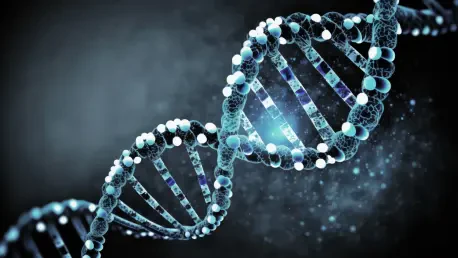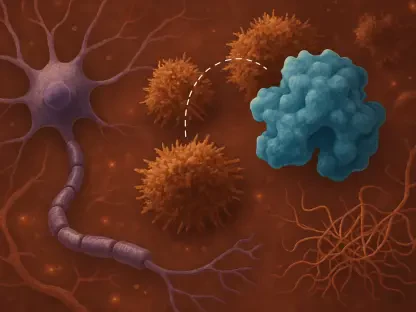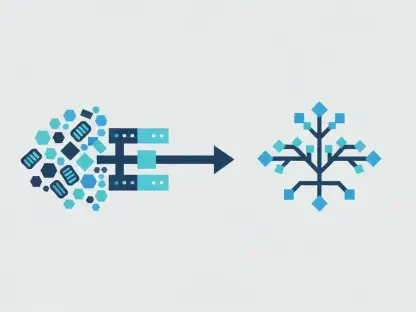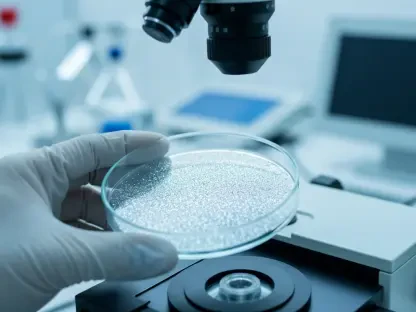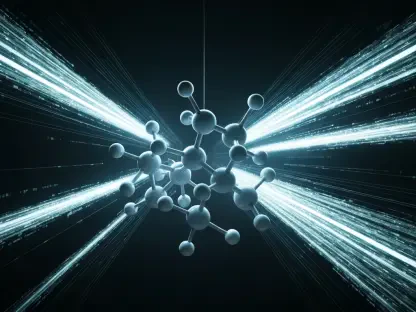The innovative and intricate world of DNA origami is revolutionizing the fields of science and medicine, enabling a leap in possibilities that were previously deemed unimaginable. Originating from an inventive method conceived by Paul Rothemund in 2006, DNA origami involves folding DNA strands into nanoscale shapes by utilizing staple strands that capitalize on DNA’s inherent binding properties. This scientific breakthrough not only highlights DNA’s natural versatility but also opens several avenues for its use as a programmable material with vast applications. As the intricacies of technology and biology continue to merge, DNA origami commands attention for its remarkable potential in diverse sectors such as nanotechnology, medicine, and beyond.
The Versatility of DNA Origami Technology
DNA origami’s versatility in technology is proving indispensable, offering innovative solutions for cutting-edge research and development. Dr. Guillermo Acuna remains a prominent figure in pushing the boundaries of DNA origami’s capabilities, channeling its potential in nanophotonics and plasmonics. By manipulating light on an extraordinarily small scale, Acuna’s research leads to the creation of sophisticated optical devices that redefine conventional understanding. These advancements underline one of many revolutionary potentials DNA origami presents, highlighting its adaptability for comprehensive technological applications. In addition to nanophotonics, DNA origami is employed to construct scaffolding for advanced nanodevices, playing an instrumental role in elevating the fields of nanoelectronics, molecular computing, catalysis, data storage, and material science. The precision, flexibility, and scalability inherent in DNA origami enable these applications to thrive. This versatility establishes DNA origami as an unparalleled tool in the technological sphere, demonstrating its wide applicability and profound influence on future innovation.
In an era where the intersection between biology and technology becomes increasingly intertwined, DNA origami stands out as a game-changing development that reduces barriers in scientific exploration. Researchers and scientists worldwide echo its profound implications, as witnessed by enthusiastic participation in forums like the Telluride Science Town Talks. These discussions further amplify DNA origami’s impact and foster collaboration within the scientific community. As this revolutionary frontier continues to gain momentum and prestige, its potential to provide innovative solutions extends beyond imagination, making it an indispensable asset to the scientific and medical arenas globally.
Medical Applications of DNA Origami
In the medical realm, DNA origami is transforming the landscape of therapeutic approaches, presenting pioneering avenues for targeted healthcare interventions. A stark example of its application is in designing complex nanostructures for targeted drug delivery systems, offering heightened precision and efficiency in treatments. By leveraging DNA origami, researchers can develop DNA-based boxes tailored to release drugs in the presence of specific cancer cells, thereby improving therapeutic outcomes and minimizing side effects. Such precision in medicine emphasizes the role DNA origami plays in advancing cancer treatment protocols, ensuring solutions that are increasingly tailored to individual patient needs. Biomedical innovations derived from DNA origami extend even further. Aside from drug delivery, DNA origami is instrumental in crafting biosensors that enhance diagnostic capabilities, allowing for early detection and efficient monitoring of diseases. This fosters an environment where preventive and proactive healthcare becomes more than a mere aspiration, transforming how conditions are identified and managed.
Beyond technological innovation, these applications demonstrate DNA origami’s capacity to introduce a paradigm shift in medicine, addressing existing challenges in treatment methods and pushing the boundaries of what’s possible. As the field continues to evolve, stakeholders in healthcare and scientific research recognize the transformative capabilities of DNA origami, positioning it at the forefront of medical advancements. Continued research and development in this area promise to bridge the gap between genetic insights and practical, real-world applications, offering hope for more effective treatments and interventions.
Unleashing the Potential of DNA Origami
DNA origami is making groundbreaking changes in science and medicine, pushing the boundaries of what we thought was possible. This fascinating technique, first introduced by Paul Rothemund in 2006, involves folding DNA molecules into precise nanoscale structures using “staple” strands, which leverage the DNA’s natural binding characteristics. This approach not only underscores DNA’s versatility but also positions it as a programmable material with numerous potential applications. As technology and biology increasingly intersect, DNA origami stands out for its significant promise across a range of fields, including nanotechnology and medical research. By using DNA as a construction material at the nanoscale, scientists foresee advanced drug delivery systems, smarter diagnostic tools, and new approaches to disease treatment. The ability to manipulate and design at such a minute scale is reshaping our approach to problem-solving in biomedicine and beyond, opening innovative paths in scientific exploration and application.
